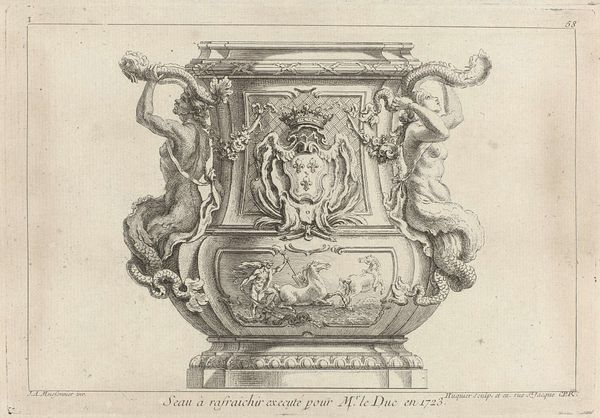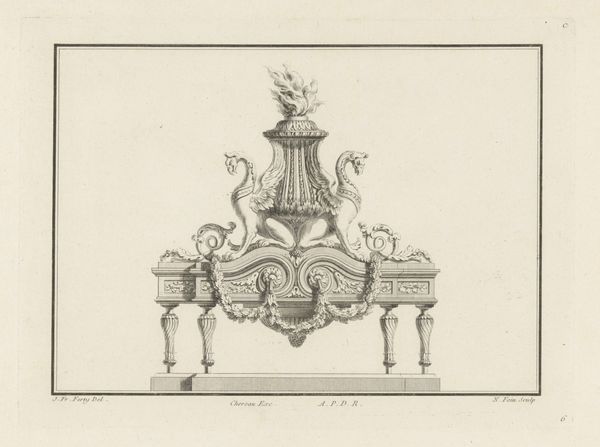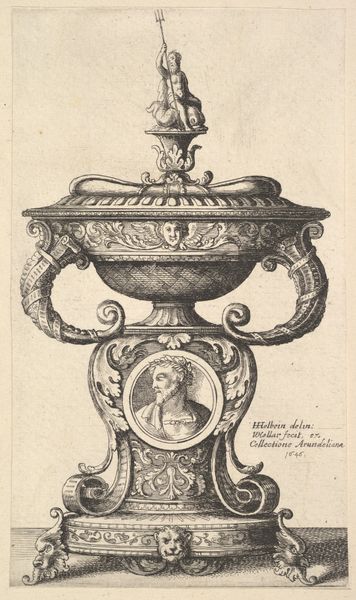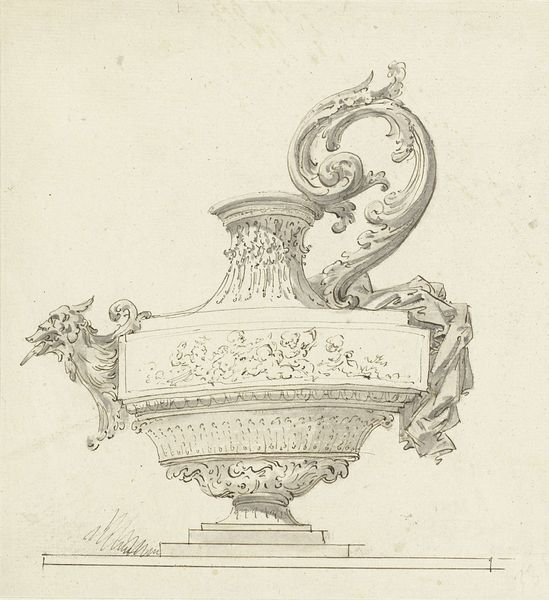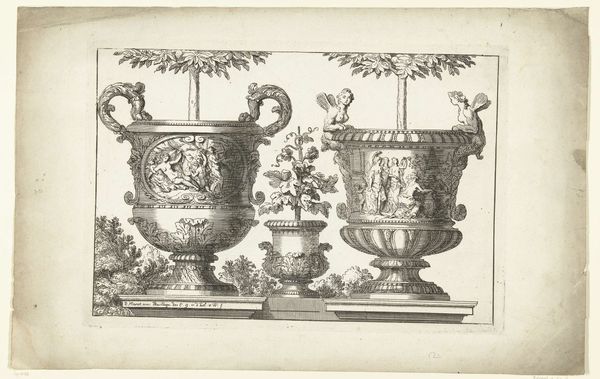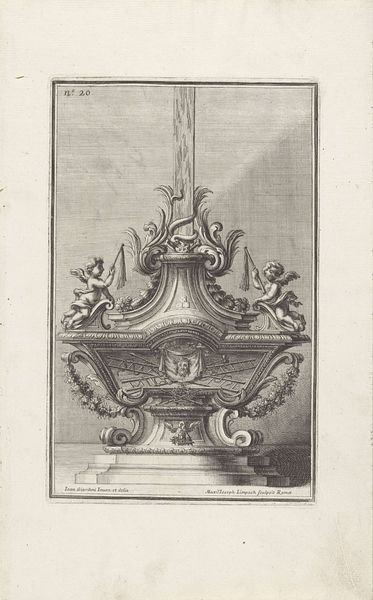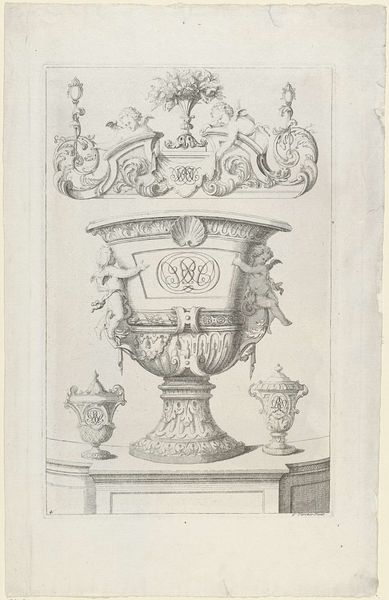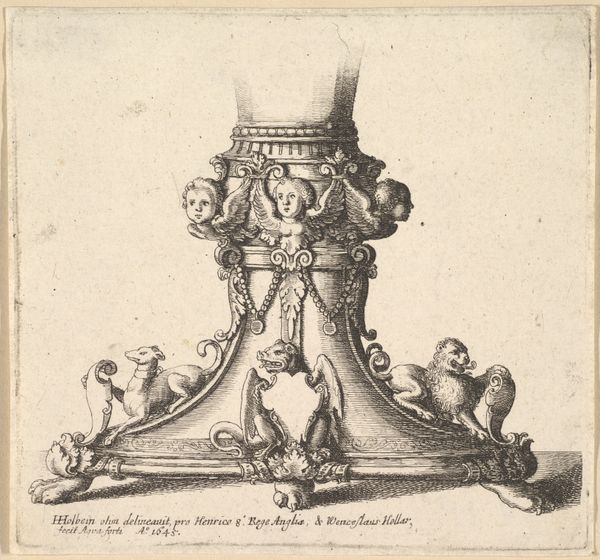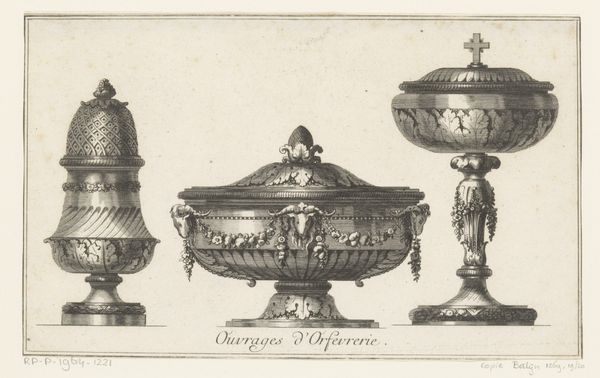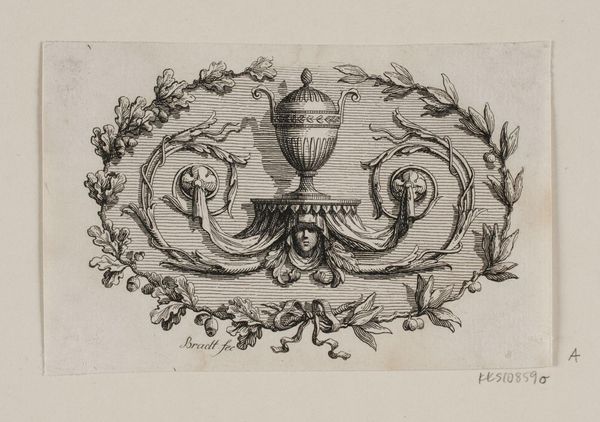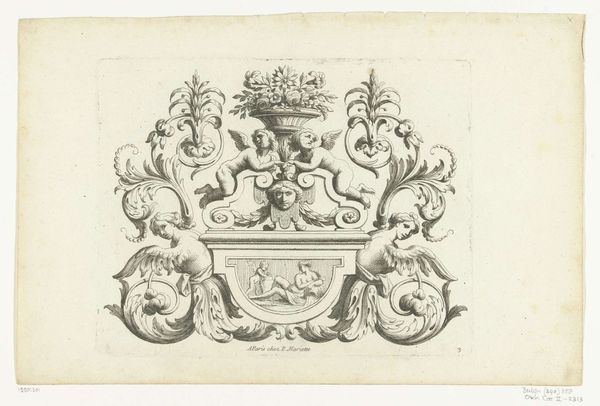
drawing, engraving, architecture
#
drawing
#
baroque
#
pen sketch
#
old engraving style
#
pen work
#
decorative-art
#
engraving
#
architecture
Dimensions: height 207 mm, width 320 mm
Copyright: Rijks Museum: Open Domain
Curator: This etching is entitled "Ontwerp voor een tafelstuk," or Design for a Table Decoration, created sometime between 1738 and 1749 by Gabriel Huquier. The artwork lives here with us at the Rijksmuseum. Editor: Immediately I'm struck by the incredible detail. It's like a baroque fantasy sprung to life on paper, full of whimsy and light. So elaborate! I wonder what feasts this centerpiece might have witnessed. Curator: It’s a design for a "surtout de table," a grand, ornamental centerpiece meant to impress at lavish banquets. Think of the sheer labor that went into envisioning and producing something so ephemeral. Engravings like this disseminated those aristocratic tastes. Editor: Precisely! But who would own something so extravagantly made? You know, for me, its a peek behind the curtain into a very different era—a moment frozen in time through incredible artisanship, but at what cost of labor and exploitation? Curator: Yes, and look at the flowing lines, the almost chaotic abundance of the Rococo style. Angels frolic atop, surrounded by delicate foliage and extravagant scrolls, almost too much...but delightfully so. The very image shouts 'status' and 'privilege.' Editor: And this print would allow for variations of this grand table piece to appear in multiple aristocratic households—or perhaps even inform other decorative objects within the home, so its function goes far beyond just planning for one particular table display, right? This suggests how images perpetuated inequality. Curator: Certainly, the design could be adapted and replicated in various materials like silver, porcelain, or even sugar! It showcases the power of these reproductive prints, allowing artisans to bring these opulent fantasies to life for a consuming elite class. It speaks to the era’s emphasis on artistic skill. Editor: Well, looking at it with today’s perspective is just as enriching. For one, its interesting how drawing allows one to plan beyond practical capabilities, so it’s simultaneously useful and a fanciful daydream on paper. The fact that it is displayed here and preserved provides some democratization for the artwork too. Curator: Ultimately, Gabriel Huquier offers us both a blueprint and a dream, allowing us to savor this excess in our imagination without breaking the bank, and to reflect on its complex societal implications. Editor: Right—it makes me contemplate the objects we value today, the labor behind them, and what future generations might read into our current obsessions with mass-produced designs and displays of excess.
Comments
No comments
Be the first to comment and join the conversation on the ultimate creative platform.
